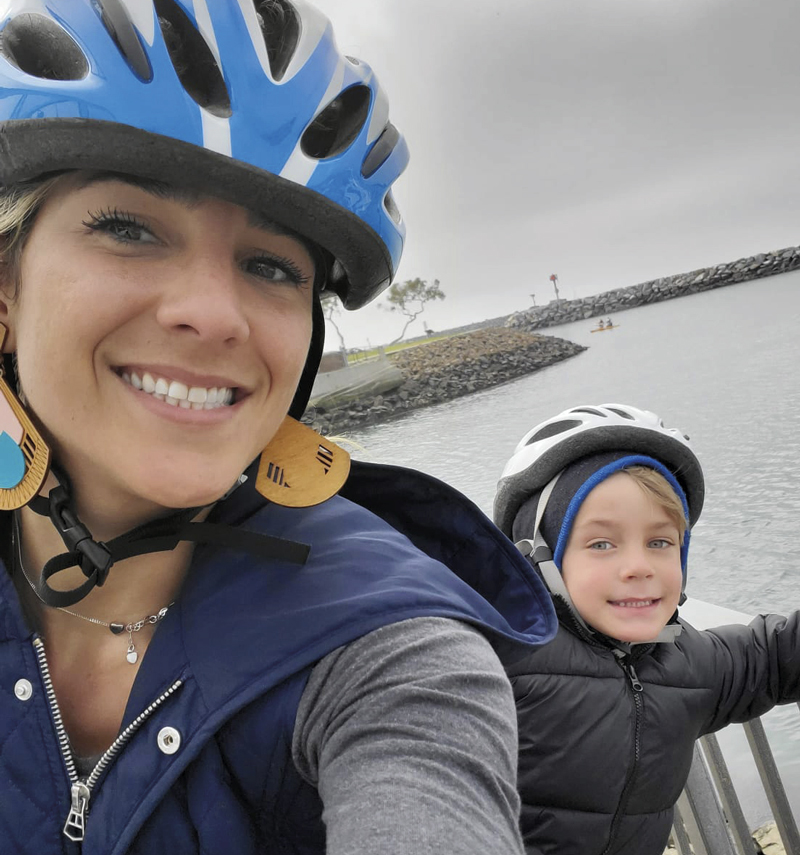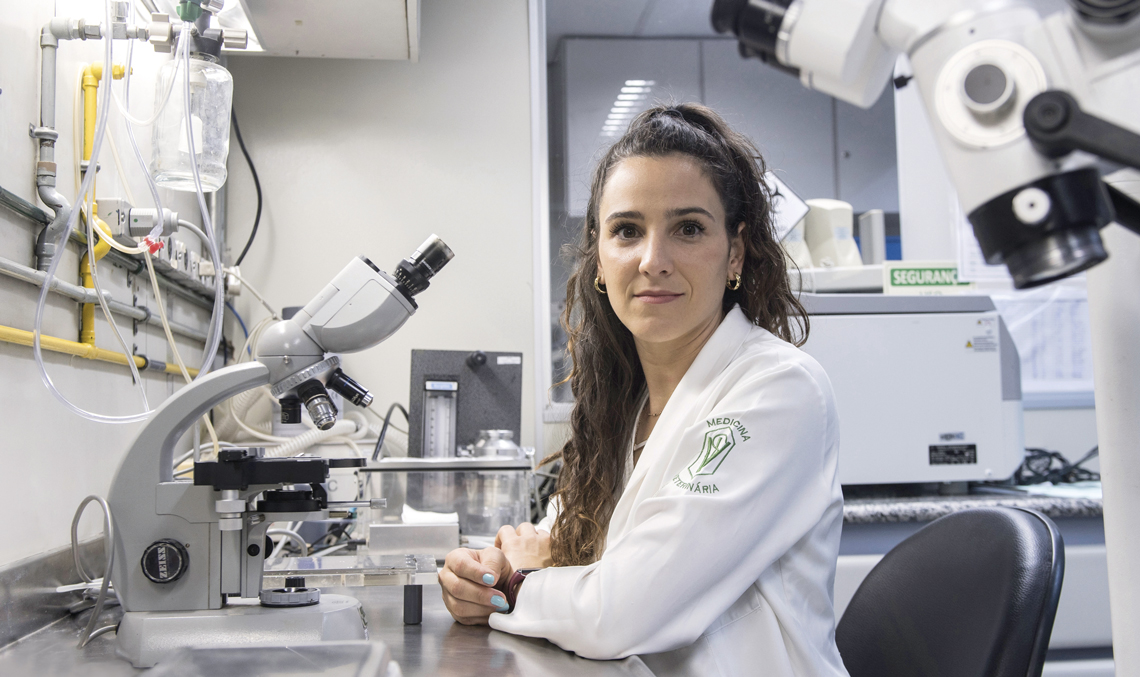Veterinary medicine has always been a natural path for me. I come from a family of veterinarians, and from an early age I began watching my father Robinson perform operations at his clinic in the west of São Paulo. Between 2007 and 2011, I studied my degree at Anhembi Morumbi University in São Paulo. When I graduated, I started working at my father’s clinic, but I dreamed of being a researcher and of international experiences in academia.
My paternal grandfather, Edson Dias Moreira, spent 50 years working as a technician at the Experimental Hypertension Laboratory at the Heart Institute of the University of São Paulo’s School of Medicine [FM-USP]. Aware of my interest in an academic career, he recommended me for an apprenticeship there. At first, I was unsure whether to accept the position because I did not want to work in human medicine, but my grandfather convinced me not to pass up the opportunity.
I joined the laboratory in March 2012, while continuing to work at the veterinary clinic. As an apprentice, I started by observing experiments and learning how to use equipment and deal with animals, such as rats and mice. Two years later, I successfully applied to do a master’s degree in medicine.
People often ask me if I encountered any resistance from doctors. I always say that dialogue between veterinarians and doctors is almost nonexistent in the clinical field, but common and desirable in academia. In medical research groups, we often seek professionals from different fields, such as physiotherapists and biologists, because there is an understanding that several approaches complement each other. This quest for integration is at the core of the concept of One Health — something I’m a big fan of — which studies the connections between humans, animals, plants, and the environment.
I did my master’s research in partnership with UNIFESP [Federal University of São Paulo], which is renowned in the field of nephrology in Brazil. I was supervised by Dr. Maria Claudia Irigoyen, head of the Experimental Hypertension Laboratory at USP. In simple terms, I investigated how bilateral renal denervation impacts the function of the aorta and the autonomic nervous system.
The procedure has been assessed as a treatment option for patients with resistant hypertension — meaning they do not respond to medication — which represents around 10% of all hypertension cases in Brazil. A catheter is used to cut off communication between the nerves in the kidneys and the brain with the aim of lowering blood pressure. The technique was developed more than three decades ago, but it was only approved for clinical use by the US FDA [Food & Drug Administration] last year. It is currently most used in research. I myself performed the procedure on spontaneously hypertensive rats.
In 2014, the year I started my master’s degree, I went through some major changes in my personal life. My son Lucca was born in August, and I separated from his father shortly after. Like many women who struggle to balance science and motherhood, I wrote my dissertation while Lucca slept. Like my grandfather, I often had to go to the InCor laboratory to conduct experiments at night or on weekends.

In the USA with her son Lucca during her sandwich doctoratePersonal archive
I defended my dissertation at UNIFESP in 2016 and started my PhD at USP the following year, again supervised by Dr. Irigoyen. I evaluated the impact of bilateral renal denervation on mesenteric resistance vessels—a network of tiny arteries that support the loops of the intestine, among other organs, and have an impact on blood pressure. This is a challenging experiment that can take up to 10 hours. For example, you have to pass tungsten wire through vessels that are less than 300 micrometers [thousandths of a millimeter] in diameter. If the wire touches the vessel wall, the experiment is ruined and you have to start all over again.
In this study, we used a device called a myograph, which analyzes the function of the blood vessels. To learn how to use the machine, I did a week of training at USP’s Ribeirão Preto campus. My aunt Rosana visited me from Goiânia to help take care of Lucca. I then spent months training until I had the skill that the experiment requires. But it was worth the effort. Two years later, a scientist from the University of California, San Diego (UCSD), visited our lab. He worked with anesthesiologist Erik Kistler, head of UCSD’s microcirculation lab, who was looking for someone who knew how to operate the myograph, which was also a rare skill in the US.
I agreed with Dr. Irigoyen that we would apply for a sandwich PhD grant from CAPES [the Brazilian Federal Agency for Support and Evaluation of Graduate Education]. Coincidentally, my mother lives in Orange County, about an hour from UCSD, and would be able to help me take care of my son.
In 2019, after everything had been organized, with my English certification in hand and my scholarship approved, the federal government cut research funding and I was left not knowing whether I would be able to make the trip. It was the most distressing experience of my life.
I started the American stage of my doctorate in January 2020, supervised by Kistler. I was part of a project studying the impact of hemorrhagic shock on mesenteric blood vessels. The study was funded by the US Army. In the USA, research at universities is funded by the government or by the private sector, such as the pharmaceutical industry. When it comes to the latter, the big advantage is that the funding is more consistent, but at the same time, there is a lot of research involving conflicts of interest.
The plan was to be there for a year, but my research stay in California was extended for a further eight months. When I returned to Brazil at the end of 2021, I was surprised by changes in the rules for funding doctoral studies abroad, and to summarize a story of many ups and downs, I was left without a grant. To be able to finish my PhD, I had to work as a veterinarian at the same time, doing consultations and surgeries. I defended my thesis at USP’s Department of Cardiology in 2023.
In my short academic career so far, one of the things that has bothered me most has been realizing that many people around me, outside the academic world, do not see research as real work. But I’m not discouraged. I am still at USP’s Experimental Hypertension Laboratory and working from home as a veterinarian. In July I am going back to the University of California for a postdoctoral fellowship. I really want to continue doing research. For women, the challenge is greater, and without the help of my female support network, which includes my mother and my advisor, it would have been much more difficult to get to where I am today.
Republish